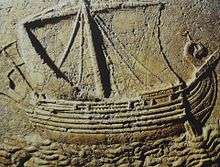Tomb of the Unknown Soldier (Lebanon)
For other uses, see Tomb of the Unknown Soldier.
| Tomb of the Unknown Soldier in Lebanon | |
|---|---|
| Lebanese Armed Forces | |
| For members of the Legion of the Orient, Army of the Levant and Lebanese Armed Forces who were killed and have no known grave | |
| Unveiled | August 1, 1945 |
| Location | Coordinates: 33°53′13″N 35°30′47″E / 33.88694°N 35.51306°E |
|
"Glory and Immortality for our Martyred Heroes" | |
Part of a series on the |
||||||||
|---|---|---|---|---|---|---|---|---|
| History of Lebanon | ||||||||
 | ||||||||
| Prehistory | ||||||||
| Ancient | ||||||||
|
||||||||
| Classical | ||||||||
|
||||||||
| Medieval | ||||||||
|
||||||||
| Modern | ||||||||
|
||||||||
| Timeline | ||||||||
|
| ||||||||
The Tomb of the Unknown Soldier in Lebanon commemorates Lebanese soldiers who served and died during the French Mandate of Lebanon from 1920 to 1943;[1] of the Legion of the Orient[2] (a unit formed by the French in 1916, during World War I)[3][4] and its successor the Army of the Levant. The tomb also represents the forming and independence of the Lebanese Armed Forces from the French Army in 1943.[1] The cenotaph in the middle includes a Cedrus libani tree surrounded by a laurel; the main symbol of Roman legions. Around the cedar tree and laurel reads in Arabic : "Glory and Immortality for our Martyred Heroes". Behind the cenotaph are original Roman columns that date back to the time of the Roman Empire.
See also
References
- 1 2 "Lebanese Ground Forces". GlobalSecurity.org. Retrieved December 8, 2008.
- ↑ "LAF History". Lebanese Armed Forces. Archived from the original on May 1, 2009. Retrieved 2009-05-19.
- ↑ "History". Lebanese Armed Forces. Retrieved 2015-01-29.
- ↑ "Steady Steps Forward". Lebanese Armed Forces. Retrieved 2015-01-29.
This article is issued from Wikipedia - version of the 9/15/2016. The text is available under the Creative Commons Attribution/Share Alike but additional terms may apply for the media files.